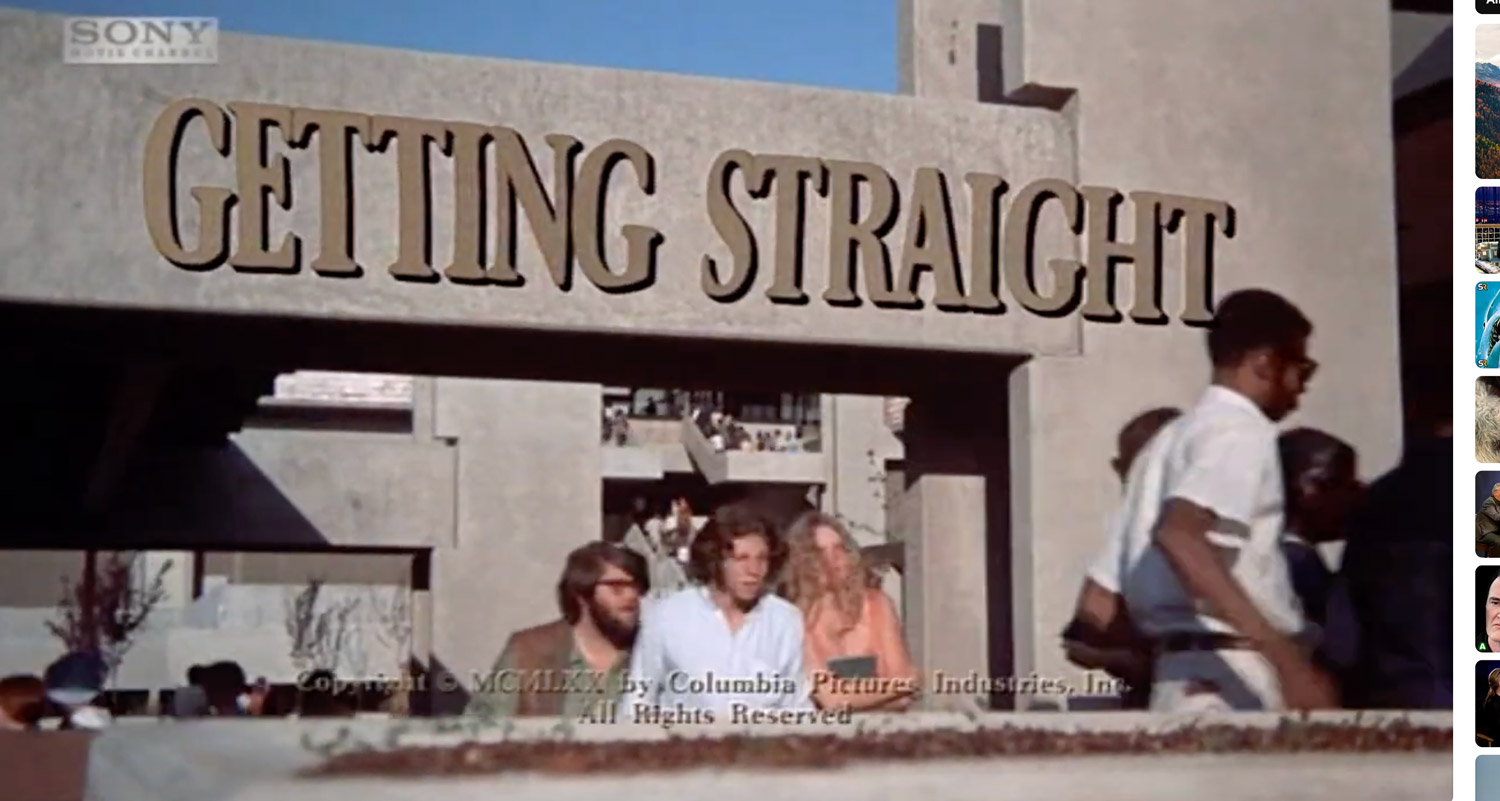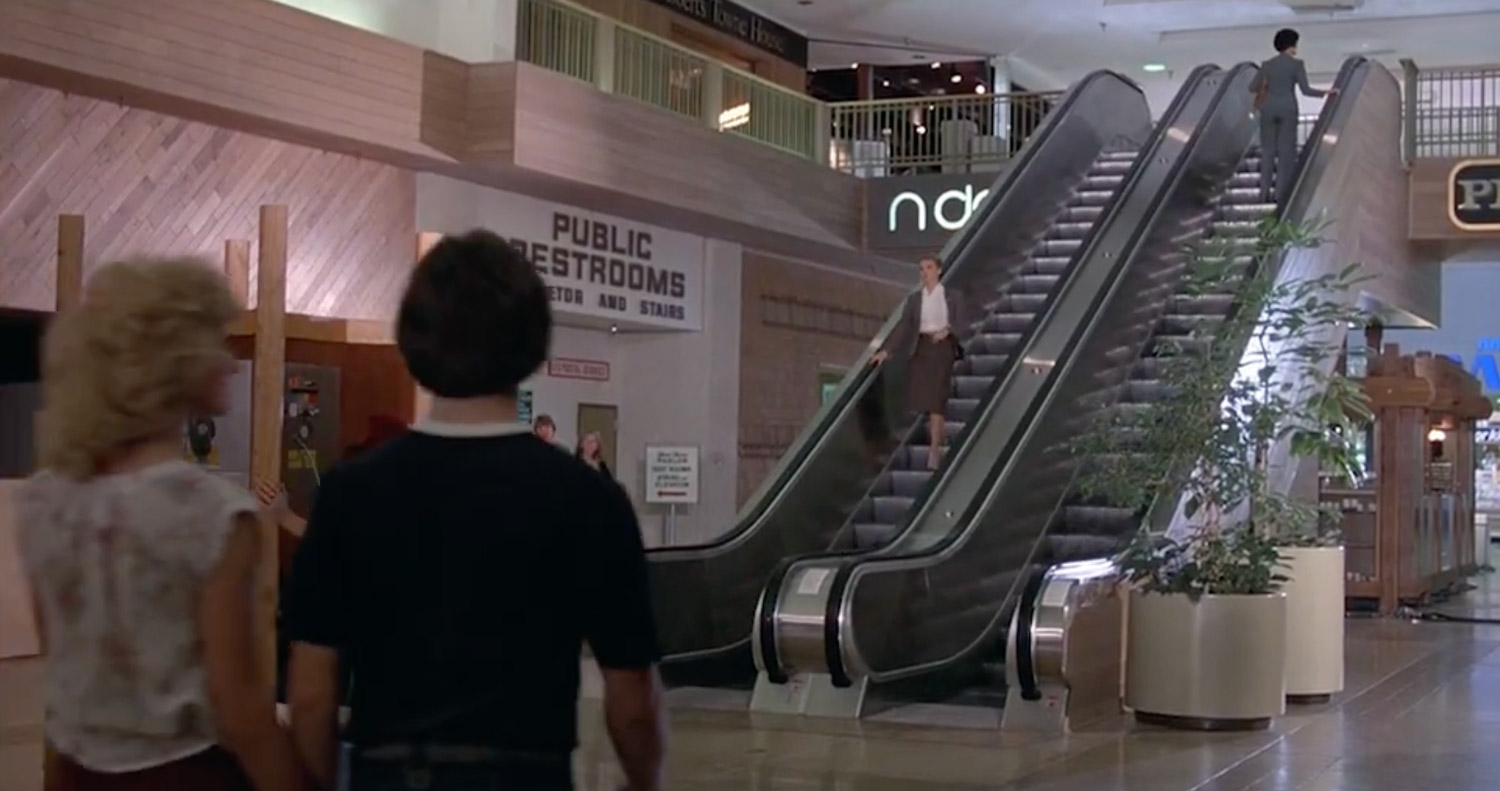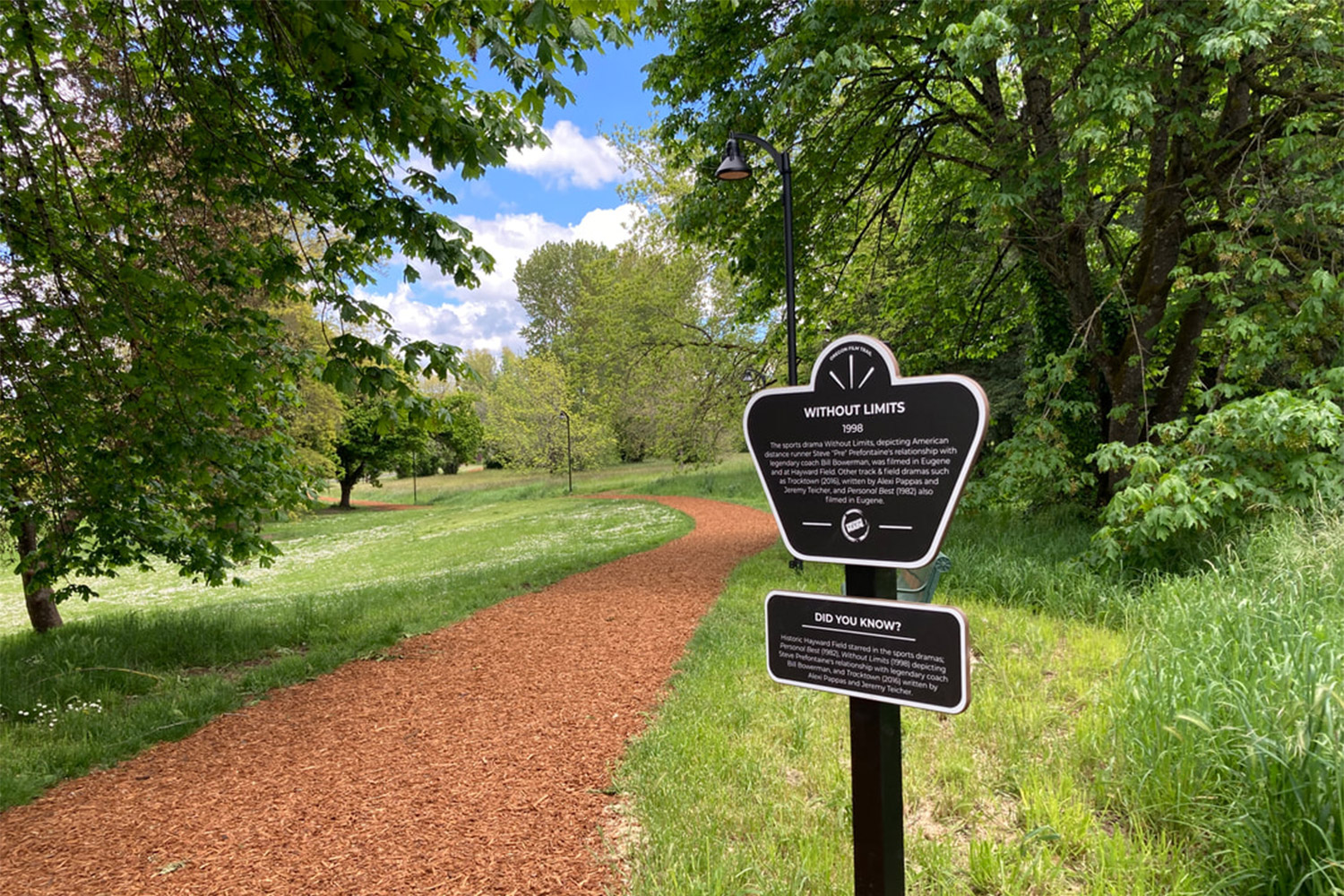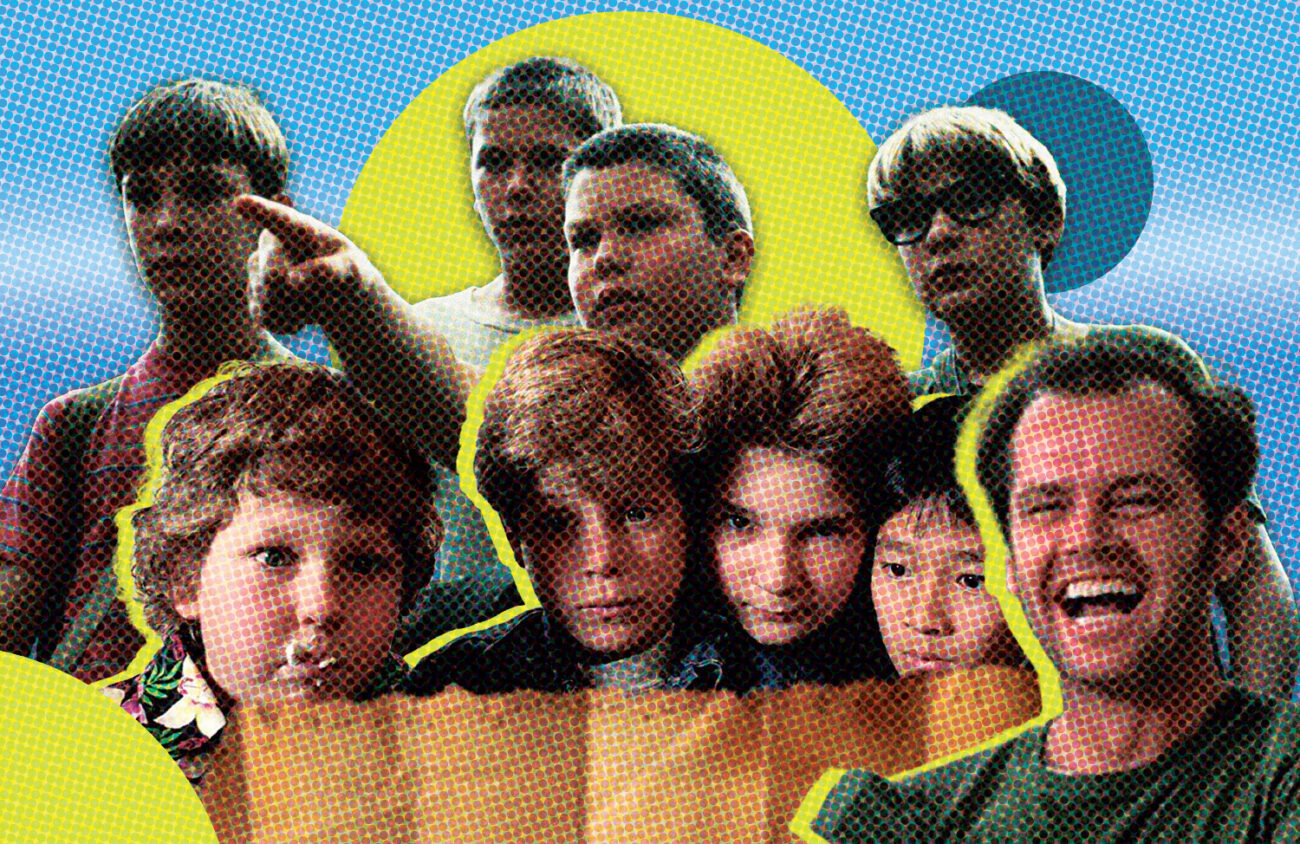Most likely, you’ve heard of the Oregon Trail, but there’s another trail Oregon is becoming known for: The Oregon Film Trail. The Beaver State has been home to several movies, like The Goonies, Stand by Me and One Flew Over the Cuckoo’s Nest.
Established in 1968, Oregon Film is the country’s oldest continuous state film office, and in 2016 it established the world’s first physical film trail. The Oregon Film Trail has signs throughout the state at locations where films were shot. An online map has a cluster of red arrows identifying filming locations in Eugene. Most know about Animal House being shot here, but fraternities aside, Eugene has a rich film history and has served as the backdrop for many films.
According to Peter Alilunas, a University of Oregon Cinema Studies professor, Eugene rose in popularity in the early ’70s when counterculture folk from Southern California went north on I-5. While some stopped in Portland or southern Oregon, many stopped in Eugene and saw its potential. Eugene’s hippie scene attracted the likes of Jack Nicholson, and director and writer Bob Rafelson.
“This was the poetic cinema capital of the world at one point,” says Katherine K’iya Wilson, a former actress, location scout and location casting director for films shot in Eugene who has been referred to as the “godmother of Oregon film” for her work with Oregon Film to help bring film production to Oregon. “This is where that whole new Hollywood came from. It’s pretty much out of Eugene,” she says.
Wilson got her start in location scouting in the 1970s when Michael Douglas and Mark Rydell hired her to find filming locations because they wanted to shoot in Oregon.
When Hollywood Came to Eugene

“I’d like a plain omelet, no potatoes on the plate, a cup of coffee and a side order of wheat toast.”
Five Easy Pieces (1970)
Director: Bob Rafelson
Screenwriter: Bob Rafelson, Richard Wechsler
Starring: Jack Nicholson, Karen Black, Susan Anspach
A rough-around-the-edges oil worker, Bobby Dupea, who is a piano prodigy and hails from a well-to-do background, learns that his father is dying and wants to make amends before he passes, so he makes the journey from Los Angeles to Washington to see him. His temperamental girlfriend comes along for the journey.
On the way, the couple pick up a pair of hitchhikers and stop at a diner. There, Dupea just wants a plain omelet with no potatoes on the plate, a cup of coffee and a side order of wheat toast. The waitress won’t let him alter the order from what is on the menu.
The scene could possibly go down as one of the most memorable restaurant orders in cinematic history and it was filmed at Denny’s, located at 3652 Glenwood Drive in Eugene. Its interior, with the brown booths and stone wall installations, still looks familiar to when Nicholson’s character stepped in only to be thrown out.
“Stop trying to hold back the hands of the clock! It’ll tear your arms out!”

Getting Straight (1970)
Director: Richard Rush, Ken Kolb
Screenwriter: Robert Kaufman
Starring: Elliott Gould, Candice Bergen
A former student and Vietnam veteran returns to school to become a teacher. However, while student activism is reaching a crescendo, he tries to avoid it. Making matters more difficult, his girlfriend is a leader in the student protests.
Lane Community College served as the university for the film. Very much of the era, Getting Straight features college students trying to fight the man.
“It’s the first modern film shot in Eugene,” Alilunas says of Getting Straight’s impact on cinema and Eugene.
According to Alilunas, the LLC president at the time disavowed the film, fearing that it’d attract students and faculty who would be prone to protest.
“This is death, this is army, war, shoot, blood, fear, kill! No way, man, no way, I’m making a stand right here, that’s all there is to it. For me, it is strictly a survival trip.”
Drive, He Said (1971)
Director: Jack Nicholson
Screenwriter: Jeremy Larner, Jack Nicholson, Terrance Malick
Starring: William Tepper, Karen Black, Michael Margotta, Bruce Dern, Robert Towne
Based on a 1964 novel of the same name by Jeremy Larner, a star college basketball player begins an affair with a professor’s wife while his counterculture roommate embodies the feel of the era by trying to avoid the draft.
The movie was filmed on the University of Oregon campus, and it was Nicholson’s directorial debut.
Alilunas says that Drive, He Said is one of his favorite films shot in Eugene because “it’s such a beautiful portrait of the university.”
But perhaps even more interesting than the film itself is the story behind the film.
The film is of its era; protests of the Vietnam War were in full swing, and Nicholson used the moment to the film’s advantage. The film features students protesting and facing off against the National Guard. But the protesters weren’t film extras; they were actual students, and the protests being filmed were real.
Knowing that his film would be confiscated, Nicholson had the film put into the trunk of his producer’s car and sent him down to LA immediately after filming the protest scenes.
When the cops arrived at the Eugene Hotel to take the footage, Nicholson, who, according to Wilson answered the door in the nude, told the cops to search him. All the while, the footage was already making its way down the I-5.
Another legend of Drive, He Said was that Nicholson paid the bail for all the student protesters who were arrested during the shooting of the film’s protest scene.
“I never had friends like the ones I had when I was 12. Jesus, does anyone?”

Stand by Me (1986)
Director: Rob Reiner
Screenwriters: Stephen King, Raynold Gideon, Bruce A. Evans
Starring: Wil Wheaton, River Phoenix, Corey Feldman
Based on a Stephen King Novella, The Body, set in the fictional town of Castle Rock, Maine, Stand by Me, the 1986 adaptation, is set in the fictional town of Castle Rock, Oregon. King, the author of nightmare fuel, having written the likes of It and Cujo, is often misunderstood as a writer who focuses on things that go bump in the night. But much of his work is based on far more relatable situations instead of supernatural killer clowns.
Stand by Me is perhaps the coming-of-age tale out of his body of work.
Set retrospectively in the ’50s, a group of preteen boys set out to find the body of a missing boy. While hunting for corpses isn’t a typical right of passage, the friendship between the boys is.
Standing in place for Castle Rock is Brownsville. Because of its 1950s ambiance, the film’s production thought Brownsville was a believable Castle Rock. The town’s residents even served as extras.
For the pie scene — if you know, you know — a local bakery supplied the pies that would probably make viewers lose their appetites for some time.
Parts of the film were also shot in Junction City and Cottage Grove.
Wilson says it was difficult to find stunt doubles who were believably able to pass as preteens.
“If you lose this war don’t blame me.”
The General (1926)
Director: Buster Keaton, Clyde Bruckman
Screenwriters: Buster Keaton, Clyde Bruckman, Al Boasberg
Starring: Buster Keaton, Marion Mack, Glen Cavender
Selected by the Library of Congress for preservation in the National Film Registry for being “culturally, historically or aesthetically significant,” The General centers on a train engineer who must recapture his seized locomotive and return it through enemy lines.
For 75 minutes, Keaton must challenge Murphy’s Law in all of its incarnations to transport the locomotive. Though a silent film, The General is surprisingly action-packed for a film shot nearly a century ago, and could be considered by some as slapstick.
But its filming is unique to Oregon. Over the summer of 1926, The General filmed in Cottage Grove. What was included in its Cottage Grove filming was 18 freight carts of Civil War-era props and set materials and the hiring of 1,500 locals.
The filming of The General was legendary, with 3,000 people on the payroll and costing $400 an hour to make in 1926, according to a United Artists press release. But despite all it took to make the film, the atmosphere on set was light-hearted, with the cast and crew playing baseball with locals.
During its production, on July 23, the climactic train wreck scene was shot. Cottage Grove declared a local holiday so residents could watch the scene’s shooting, resulting in nearly 4,000 locals coming to watch it as well as 500 extras from the Oregon National Guard.
A mural of The General commemorates the film in downtown Cottage Grove.
“Tell them your story. Make ’em weep. You could have been a meat-eater, kid. But you didn’t listen to me when I laid it down.”
Emperor of the North (1973)
Director: Robert Aldrich
Screenwriters: Christopher Knopf, Jack London
Starring: Lee Marvin, Ernest Borgnine, Keith Carradine
Again with the trains. Again in Cottage Grove.
A train conductor, Shack, passionately protects his freight train from stowaways during the Great Depression. Making this aim harder is legendary A – No. 1, based on a real-life hobo who was viewed as a hero among his peers. A – No. 1 manages to sneak on Shack’s train, along with Cigaret, a younger and less-experienced trainhopper who’s following A – No. 1.
But Shack catches a glimpse of Cigaret, which leads to A-No. 1 having to face off with the conductor who holds a vendetta against him. Now A – No. 1 tries to be the first hobo to make it through a ride on Shack’s train.
Oregon, Pacific and Eastern Railway allowed use of the railway in Cottage Grove after reaching an agreement with Gov. Tom McCall and 20th Century Fox, shooting in the same location as The General.
“I know how to get the money out of the money ball!”

How to Beat the High Cost of Living (1980)
Director: Robert Sheerer
Screenwriter: Robert Kaufman, Leonora Thuna
Starring: Jane Curtin, Susan Saint James, Jessica Lange
Three women are struggling to make ends meet in a struggling national economy and rising inflation — sounds familiar. To beat the high cost of living, the three devise a plan to steal money from a giveaway event held at Valley River Center.
The most quintessential set-in-Eugene film, How to Beat the High Cost of Living, doesn’t shy away from the fact that it’s set in Eugene. The film opens with an aerial view of Valley River Center. Compared to many films that obfuscate their setting, How to Beat the High Cost of Living is the most Eugene Eugene film.
How to Beat the High Cost of Living is a favorite of Alilunas’s thanks to the use of Eugene multiple locations. Its filming locations are spread throughout Eugene, like the Market of Choice on Franklin Avenue and, of course, Valley River Center. Released 10 years after Drive, He Said, Alilunas appreciates how How to Beat the High Cost of Living shows the changes Eugene went through in a decade and that it shows what the other side of town, away from the university, was like.
“Well, that’s how you know you’re doing something you love… when you can’t imagine doing anything else.”
Tracktown (2016)
Director: Alexi Pappas, Jeremy Teicher
Screenwriter: Alexi Pappas, Jeremy Teicher
Starring: Alexi Pappas, Chase Offerle, Rachel Dratch
“Break a leg” doesn’t mean the same in track as it does in theater. A young but lonely distance runner prepares for the Olympic pre-trials, but twists her ankle before the biggest event of her life. Set at the University of Oregon, Tracktown is a film that embodies Eugene’s track spirit, reminding viewers that every four years top-calibre track and field athletes come to Eugene as the entryway to possibly making the greatest sport competition in the world.
“I ain’t the catch of the river but I ain’t got so much mule-headed vanity I can’t admit I’m in love and come right out and do somethin’ about it.”
Rachel and the Stranger (1948)
Director: Norman Foster
Screenwriter: Waldo Salt
Starring: Loretta Young, William Holden, Robert Mitchum
In the pioneer times, an indentured servant is sold to a widower to be his wife and stepmother to his son. Unsurprisingly, it isn’t a happy marriage, and things only become more complicated when the widower’s best friend falls in love with his wife.
Though Rachel and the Stranger had little funding, it was the highest-grossing film the year it was released.
Filmed in Eugene, the movie even built a fort on the riverbanks close to Hendricks Bridge.
Though Rachel and the Stranger was filmed decades ago, some things were still quintessential Eugene, even back then. Shortly after filming wrapped, Robert Mitchum was arrested for cannabis possession in Los Angeles. The studio savvily rushed the theatrical tease for the film, hoping to capitalize on the publicity of Mitchum’s arrest.
“That fellow’s crossed me for the last time, and I’m going to get even with him.”
Ed’s Coed (1929)
Director: Carvel Nelson, James Raley
Starring: Helen Allen, Dorothy Burke, Norman Eastman
Not many universities can claim to have been the filming location for a film from the 1920s, but Ed’s Coed shot on the University of Oregon campus, was revolutionary for its time. Countryboy Ed attends university on the wishes of his father (and seeing his college cousin with a beautiful coed). But his peers have hazing on their minds and their targets locked on Ed. But Ed is determined not to be deterred.
Nearly a century old, the university looks quite different compared to the days of silent film, but Villard and University halls are still standing, though both have undergone recent renovations.
Alilunas also appreciates the film, which acts as a time capsule for Eugene, features the Mill Race, where students would race in boats on the Willamette River.
“I can endure more pain than anyone you’ve ever met. That’s why I can beat anyone I’ve ever met.”

Without Limits (1998)
Director: Robert Towne
Screenwriter: Robert Towne, Kenny Moore
Starring: Billy Crudup, Donald Sutherland, Monica Potter
Chances are, if you live in Eugene, you’ve probably heard of Steve Prefontaine. But in case you haven’t, Prefontaine was a champion long-distance runner and Olympian who ran for the University of Oregon. After dying at the young age of 24, Prefontaine has always been frozen in time as a legend in Eugene and the sport of running.
A year after Prefontaine, starring Jared Leto, was released, Without Limits came along. But unlike Prefontaine, which was filmed mostly at the University of Puget Sound, Without Limits was filmed in Pre’s spiritual home of Hayward Field. Even Bill Bowerman’s home was used as a filming location.
“The day you run my race, you run my life!”
Personal Best (1982)
Director: Robert Towne
Screenwriter: Robert Towne
Starring: Mariel Hemingway, Scott Glenn, Patrice Donnelly, Kenny Moore
Track athletes Chris Cahill and Tory Skinner are competitive with each other, which complicates things since they’re also in love with each other. Will the two’s burgeoning feelings affect their performance on the track?
While much of Personal Best was shot in San Luis Obispo County, California, filming also took place at Hayward Field and Track Town Pizza.
“Toga! Toga!”
Animal House (1978)
Director: John Landis
Screenwriter: Harold, Ramis, Douglas Kenney, Chris Miller
Starring: John Belushi, Tim Matheson, Tom Hulce, Peter Riegert, Stephen Furst
And, of course, there’s the film Eugene is best known for: Animal House. The college humor movie before the genre really even existed, Animal House was pivotal in the direction cinematic comedy took for many years. Outrageous and blunt, Animal House has been something of a legend for the University of Oregon, with most of the scenes shot on campus.
A zany fraternity, Delta Tau Chi, faces off against an administration determined to see it crumble. How will Delta Tau Chi respond? By partying and raising hell.
While much of the University of Oregon campus has changed since the fictional fraternity stoked mayhem — Hayward Field is completely different and the Delta Tau Chi house was torn down about a decade after filming ended (Dean Vernon Wormer probably approves) — there are still plenty of places on campus that can transport you back to the debauchery of ’78, like Johnson Hall, Gerlinger Hall and Memorial Quad.
While Animal House is widely regarded as the Eugene film, according to Wilson, it almost didn’t happen. Animal House had a difficult time finding a university that would let the unabashedly raunchy, raucous film shoot on its campus. Oregon wasn’t the first choice for Animal House to be shot in. But it became a viable choice, and they were fortunate to encounter a university president who had a brush with Hollywood.
UO President William Beaty Boyd was employed at the University of California, Berkeley, when the university was asked to allow filming of The Graduate on its campus. Turned off by the film’s risque subject matter, the UCB rejected its request, resulting in the film being shot at the University of Southern California instead.
However, when The Graduate became a mega hit upon its release in 1967, Boyd regretted that the film wasn’t shot on California’s Berkeley campus. Ten years later, he was determined not to make the same mistake.
Wilson helped find locations for Animal House to be shot. And she also has an interesting tidbit of information about the Delta Tau Chi house: it was a halfway house for prisoners attending the university.
Though many of Eugene’s most memorable films are decades old, Wilson feels optimistic about Eugene’s film scene. “It just feels like there’s some kind of wonderful artistic movement in Eugene right now that is coming back to that place of innovation and truth-telling and perception that is going to make great films,” she says.
Stories, including those seen through the medium of film, are essential for humanity, she adds. “Without stories, we’re nothing. Story is everything.”
